Every Best Actress Oscar Winner in Academy Award History

Oscar’s best actress winners over the decades have included a great range of characters, from devoted moms to hookers to activists. Some of the acting styles have dated, but others remain powerful after all these years. And the 1968 tie between two actresses proves that Oscar voting is often extremely close: One vote would have eliminated one of those two winners. See the Best Actor Oscar winners here.
Here are all the honored actresses.
More from Variety
Best of Variety
A24's Best 35 Movies Ranked, From ‘Moonlight’ to ‘Uncut Gems’
Saoirse Ronan Turns 30: From 'Lady Bird' to 'Brooklyn,' Her 11 Best Film Performances
Every Best Actress Winner
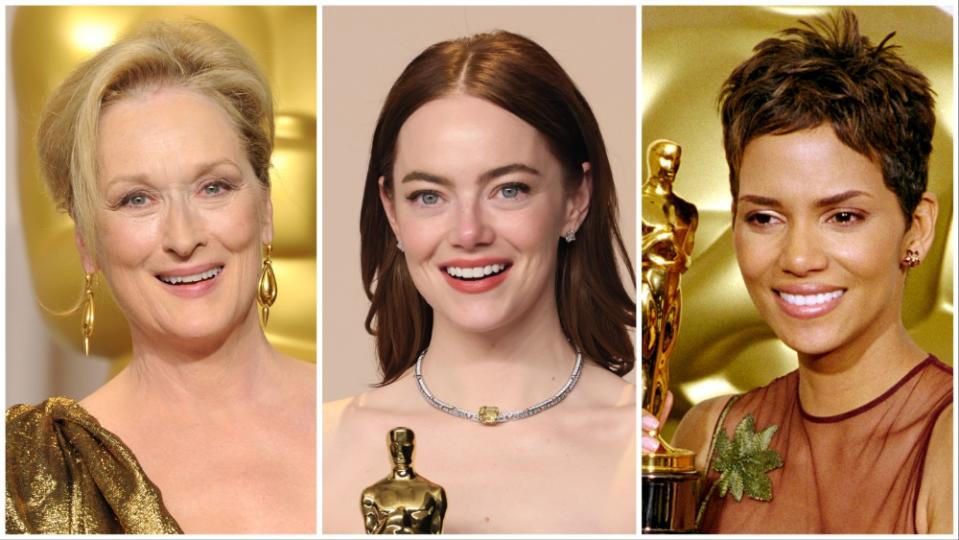
Oscar’s best actress winners over the decades have included a great range of characters, from devoted moms to sex workers to activists. Some of the acting styles have dated, but others remain powerful after all these years. And the 1968 tie between two actresses proves that Oscar voting is often extremely close: One vote would have eliminated one of those two winners. Here are all the honored actresses.
Emma Stone

“Poor Things”
Emma Stone won her second Oscar (the first was for “La La Land”) at the 2024 ceremony for her role in Yorgos Lanthimos’ fantastical “Poor Things,” which also won trophies for costume design, makeup and hairstyling and production design.
Michelle Yeoh

“Everything Everywhere All at Once”
Michelle Yeoh became the first Asian woman to win the best actress Oscar at the 2023 ceremony for the Daniels’ imaginative multiverse movie.
Jessica Chastain
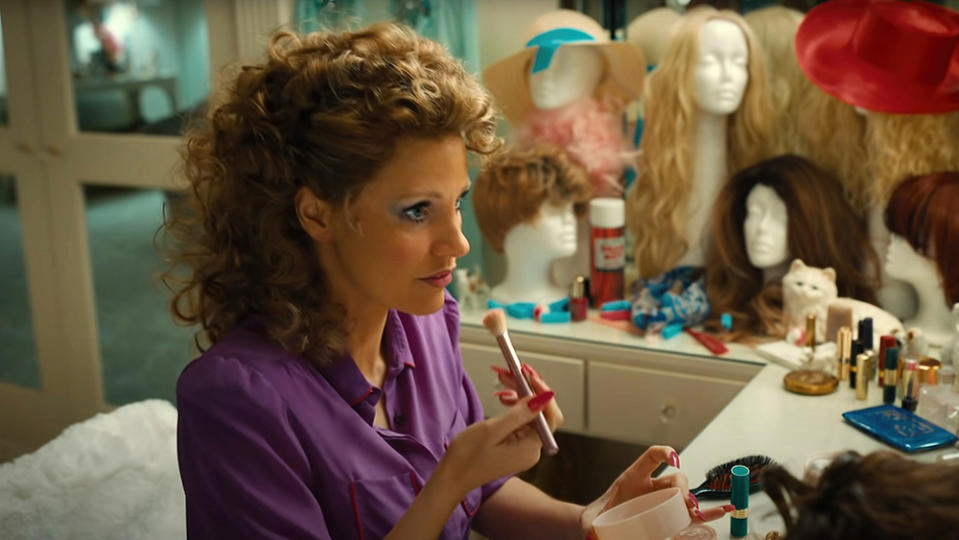
“The Eyes of Tammy Faye”
Jessica Chastain was the victor in what seemed to be one of the evening’s tightest races. She played televangelist Tammy Faye Messner, optioning the material after seeing a documentary on her and husband Jim Bakker; the actress worked 12 years to get the film made. It was a showy performance, in which she ages 20 years, belts gospel songs, and deals with drug dependency and consumerism. Th redeems herself by showing compassion to a man with AIDS at a time that it was an unspoken condition. It was Chastain’s first win on her third nomination.
Frances McDormand

“Nomadland”
Frances McDormand became only the third person to win three lead-acting Oscars, after Katharine Hepburn and Daniel Day-Lewis. McDormand was also a producer of “Nomadland,” playing a woman who hits the road after losing her job and her husband. She previously won for “Fargo” and “Three Billboards Outside Ebbing, Missouri.” Past winners with three were Ingrid Bergman, Meryl Streep and Jack Nicholson (who each had two leads and one supporting), and Walter Brennan (all supporting). Hepburn holds the record with four, all leads.
Renée Zellweger (2019)

“Judy”
Renée Zellweger had three consecutive Oscar nominations, 2001-2003, winning finally as supporting actress for “Cold Mountain.” She virtually disappeared from films for six years, returning in some low-profile movies starting in 2016. When “Judy” debuted at the Telluride Film Festival, the media declared it her comeback, and she was immediately pegged as the best-actress frontrunner. For five months, she maintained that status, winning for her poignant performance as Judy Garland during a low point in her life.
Olivia Colman (2018)

“The Favourite”
Olivia Colman became the eighth person to win an Oscar for playing a monarch. Her Queen Anne (who ruled Great Britain from 1702 to 1714) is a frail, insecure, and slightly dotty woman who learns to assert herself as everyone around her jockeys for power. Though she was a popular choice, Colman’s win was one of the biggest surprises of the evening because Glenn Close (“The Wife”) was considered a sure bet.
Frances McDormand (2017)

“Three Billboards Outside Ebbing, Missouri”
Twenty years after winning for “Fargo,” Frances McDormand scored her second best-actress win with “Three Billboards,” playing an angry, take-charge woman seeking justice after her daughter’s rape/murder. McDormand swept early awards (Golden Globes, SAG Awards, BAFTAs, etc.) so her victory was not a surprise, but she proved a popular choice at the Oscars — even more so after her rousing acceptance speech.
Emma Stone (2016)

“La La Land”
“La La Land” was an Oscar phenomenon, with 14 nominations, tying it with “”All About Eve” and “Titanic.” Since its debut, the film earned critics’ Valentines and it won a record seven Golden Globes. But the backlash got louder as the Oscar deadline neared, and the film ended up with six wins, including best director, song and score. Emma Stone took top honors for her funny-touching performance, and her singing.
Brie Larson (2015)

“Room”
The California native started working as a child actress. “Room” was directed by Lenny Abrahamson, with Emma Donoghue adapting her novel; it’s a troubling tale of a woman raising a young son while being held captive for years by a crazed man. The performances of Brie Larson and young Jacob Tremblay were the key to the film’s success.
Julianne Moore (2014)

“Still Alice”
Julianne Moore finally scored a win with her fifth Academy Award nomination. In “Still Alice,” directed by Richard Glatzer and Wash Westmoreland, she plays a linguistics professor in the early stages of Alzheimer’s.
Cate Blanchett (2013)

“Blue Jasmine”
Australian actress Cate Blanchett had already won a supporting Academy Award as Katharine Hepburn in “The Aviator” — an Oscar winner for playing an Oscar winner. In the Woody Allen’s “Blue Jasmine,” she plays a variation of Blanche DuBois from “Streetcar Named Desire,” a high-strung woman who disrupts her sister’s household.
Jennifer Lawrence (2012)

“Silver Linings Playbook”
Writer-director David O. Russell created an uplifting comedy about mental illness. It’s a difficult balancing act, but it all works because of the acting, with Bradley Cooper and Jennifer Lawrence irresistible in tough roles. This was her second Oscar nomination, and she earned an impressive four within a six-year span.
Meryl Streep (2011)
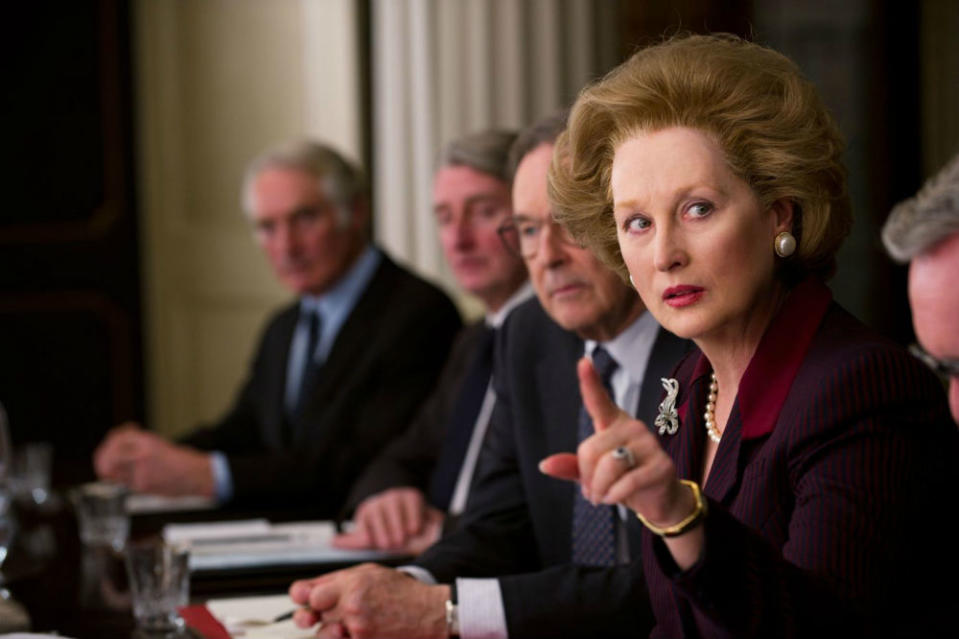
“The Iron Lady”
Meryl Streep won her third Oscar as British Prime Minister Margaret Thatcher. Streep’s win here marked several milestones. It was the ninth win in 13 years for an actress playing a factual character. And while she holds the record for the most nominations — this was her 17th — it had been 30 years since she won her last Oscar.
Natalie Portman (2010)

“Black Swan”
The premise seemed unlikely: a thriller set in the world of ballet. But director Darren Aronofsky made it work and Natalie Portman carried off the role of a dancer who’s driven, needy and maybe a little nuts.
Sandra Bullock (2009)

“The Blind Side”
“The Blind Side” was based on the true story of Leigh Anne Tuohy, whose white family took in a homeless black teenager and made sure he got a good education. It’s a tearjerker, and Bullock gives a performance that’s tough and loving with no sentimentality.
Kate Winslet (2008)

“The Reader”
The Holocaust drama earned Kate Winslet her sixth nomination. The film was directed by Stephen Daldry (who also directed Nicole Kidman to her win) from a script by David Hare. Interestingly, Winslet won a supporting actress Golden Globe and SAG Award for this performance — but won in the lead category for BAFTA and Oscar.
Marion Cotillard (2007)

“La Vie en Rose”
The French actress was not well known in the U.S., but made the rounds in Hollywood to assure people that she was very unlike Edith Piaf in the movie. This was the first time since Sophia Loren that a best-actress winner was rewarded for a foreign-language performance.
Helen Mirren (2006)

“The Queen”
The film, written by Peter Morgan and directed by Stephen Frears, was a look at Queen Elizabeth as she tried to hold the monarchy — and all of Britain — together following the traumatic death of Princess Diana. Mirren was regal but very human.
Reese Witherspoon (2005)

“Walk the Line”
Reese Witherspoon and Joaquin Phoenix were excellent as June Carter Cash and Johnny Cash — and did their own singing to boot. This was her first nomination, though she had given memorable performances in films as diverse as “Election,” “Freeway” and “Legally Blonde.”
Hilary Swank (2004)

“Million Dollar Baby”
Clint Eastwood directed and starred in this film, scripted by Paul Haggis (“Crash”) from F.X. Toole’s stories. Starring as an aspiring boxer, Hilary Swank moved into a select club: She became the 12th woman to win two best-actress Academy Awards.
Charlize Theron (2003)

“Monster”
Charlize Theron was the fourth woman in five years to win for playing a real person; she played serial killer Aileen Wuornos. The beautiful South Africa-born actress was unrecognizable, thanks to her acting and her extensive makeup.
Nicole Kidman (2002)

“The Hours”
Nicole Kidman had been acting since she was a teenager in her native Australia. In “The Hours,” directed by Stephen Daldry, she plays British author Virginia Woolf. Though her makeup (including a fake nose) got a lot of media attention, it was her performance that made the entire film work. This was her second of four Oscar nominations.
Halle Berry (2001)

“Monster’s Ball”
Halle Berry became the first black woman to win the best actress Oscar, after Hattie McDaniel and Whoopi Goldberg had been saluted in the supporting race. In her tearful acceptance speech, she said, “This moment is so much bigger than me … it’s for every nameless, faceless woman of color that now has a chance, because the door tonight has been opened.”
Julia Roberts (2000)

“Erin Brockovich”
On her third Academy Award nomination, Julia Roberts took home the gold for playing the real-life Erin Brockovich, a smart, feisty and sexy woman who challenged the power company for polluting a town’s water supply. Steven Soderbergh was nominated twice in 2000, for directing this and “Traffic”; he won for the latter.
Hilary Swank (1999)

“Boys Don’t Cry”
Hilary Swank’s main claim to fame was a recurring role on “Beverly Hills, 90210” when she was cast in “Boys Don’t Cry,” about Brandon Teena, born a female but living as a male. The film marked the big screen directing debut of Kimberley Peirce. Swank’s win also started a run of best-actress winners playing real-life characters, with four winners in five years.
Gwyneth Paltrow (1998)

“Shakespeare in Love”
For much of 1998, “Saving Private Ryan” seemed the front-runner, but “Shakespeare in Love” ended up the big winner, taking home seven wins out of its 13 nominations. Gwyneth Paltrow won as best actress playing Viola, a fictional muse of Shakespeare as he struggles to write a new play he plans to call “Romeo and Ethyl.”
Helen Hunt (1997)

“As Good as it Gets”
Fourteen years after “Terms of Endearment,” James L. Brooks wrote and directed his fourth film and again steered two actors into Oscar wins. Helen Hunt and Jack Nicholson both won for the comedy-drama; Hunt was one of the few people to win while also starring in a TV series (in her case, it was NBC’s Paul Reiser sitcom “Mad About You”).
Frances McDormand (1996)

“Fargo”
Pregnant cop Marge Gunderson is only onscreen for about 32 minutes of the “Fargo” running time, but she’s the character most people remember. (In comparison, William H. Macy was nominated as supporting actor, but was onscreen for 34.5 minutes). She is one of the few women to get the top prize while being directed by her husband (Joel Coen).
Susan Sarandon (1995)

“Dead Man Walking”
Susan Sarandon was the first actress to win an Oscar by playing a nun (in contrast to the six best-actress winners who had played prostitutes). This was her fifth nomination, playing Sister Helen Prejean, who worked with death-row inmates. The film was directed by Sarandon’s partner at the time, Tim Robbins.
Jessica Lange (1994)

“Blue Sky”
“Blue Sky” was the last film from director Tony Richardson; due to the bankruptcy of distributor Orion, it sat on the shelf for three years. Jessica Lange won her second Academy Award (after her supporting award for “Tootsie”) as a woman struggling with mental illness and the demands of being a military wife.
Holly Hunter (1993)
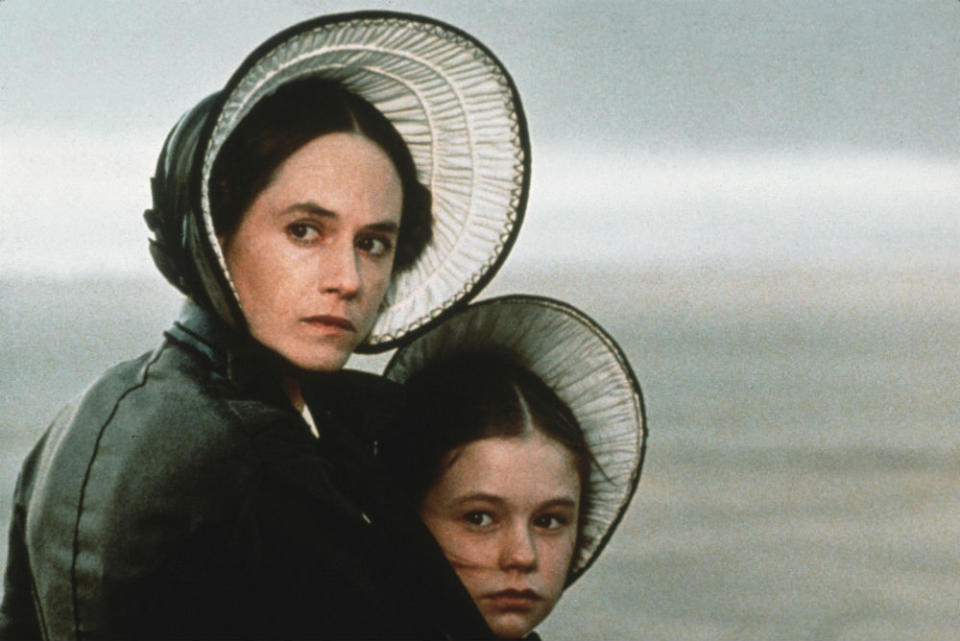
“The Piano”
Like Jane Wyman and Marlee Matlin, Holly Hunter won her Oscar for a wordless performance. The film, set in 1850s New Zealand, was nominated for eight Academy Awards, with Jane Campion becoming only the second woman nominated for director. Campion won for her screenplay, and Anna Paquin won as supporting actress at age 11, the second-youngest ever (after Tatum O’Neal).
Emma Thompson (1992)

“Howards End”
“Howards End” was the third E.M. Forster adaptation from director James Ivory, producer Ismail Merchant, and writer Ruth Prawer Jhabvala. It marks the second consecutive win for an Anthony Hopkins leading lady. Emma Thompson is the only best-actress winner to also nab the prize for screenplay (1995’s “Sense and Sensibility”).
Jodie Foster (1991)

“The Silence of the Lambs”
Three years after her first Oscar, Jodie Foster was again a winner as FBI agent Clarice Starling. This was the third film (after “It Happened One Night” and “One Flew Over the Cuckoo’s Nest”) to take the big five prizes: picture, director (Jonathan Demme), actor (Anthony Hopkins), screenplay (Ted Tally, from Thomas Harris’ novel), and actress.
Kathy Bates (1990)

“Misery”
Kathy Bates worked in small roles in film and TV, and bigger roles onstage, for many years before her breakthrough in “Misery,” as the obsessed fan of a writer. Rob Reiner directed the film, scripted by William Goldman from Stephen King’s novel.
Jessica Tandy (1989)

“Driving Miss Daisy”
Born in London in 1909, Jessica Tandy had a long career, notably in stage works like “A Streetcar Named Desire,” and her film work was mostly in supporting roles (e.g., in Alfred Hitchcock’s “The Birds”). She became a movie star and Oscar-winner at age 80 in the film about a widow’s 20-year relationship with her driver in this adaptation of Alfred Uhry’s play.
Jodie Foster (1988)

“The Accused”
Jodie Foster began doing commercials at age 2, and was Oscar-nominated for “Taxi Driver” at age 14. She was always a respected pro, but “The Accused” showed audiences (and the industry) that she had become an accomplished adult actress. In “The Accused,” she stars as a woman who is gang-raped and seeks justice.
Cher (1987)

“Moonstruck”
Cher rose to fame as half of the Sonny & Cher duo, first making hit records in the 1960s and then hosting a TV variety show. Her early films were often below the radar, but she made a comeback in a Robert Altman-directed play. She scored her second nomination and first Oscar win for the seriocomic “Moonstruck,” written by John Patrick Shanley and directed by Norman Jewison.
Marlee Matlin (1986)

“Children of a Lesser God”
Marlee Matlin was unknown when she was cast opposite William Hurt in this Randa Haines-directed film, adapted from Mark Medoff’s play about a deaf woman and her romance with a hearing pathologist. To date, she is the only deaf woman to win the award.
Geraldine Page (1985)

“The Trip to Bountiful”
This was her eighth nomination and first win. In this adaptation of Horton Foote’s play, Page starred as a lonely woman who sneaks away from her son’s Houston home to make a return journey to Bountiful, where she was raised.
Sally Field (1984)

“Places in the Heart”
When Sally Field won her second Oscar, she gave one of the most memorable (and most misquoted) acceptance speeches of all time. She said to the industry audience, “I haven’t had an orthodox career and I’ve wanted more than anything to have your respect. The first time I didn’t feel it, but this time I feel it — and I can’t deny the fact that you like me; right now, you like me!””
Shirley MacLaine (1983)

“Terms of Endearment”
This was her fifth nomination as best actress (in addition to her nomination for the 1975 documentary “The Other Half of the Sky”). Writer-director-producer James L. Brooks was a triple-winner for the film, with Jack Nicholson getting the supporting win. And MacLaine offered yet another high point to her astonishing career — 60 years and still going strong.
Meryl Streep (1982)

“Sophie’s Choice”
After stage work in New York, Meryl Streep made her film debut in 1977’s “Julia,” won an Oscar for 1979’s “Kramer vs. Kramer,” and took her acting (and career) to new heights in “Sophie’s Choice.” The film, adapted from William Styron’s novel, centers on a Polish Catholic woman in New York who is haunted by her experiences in a WWII concentration camp.
Katharine Hepburn (1981)
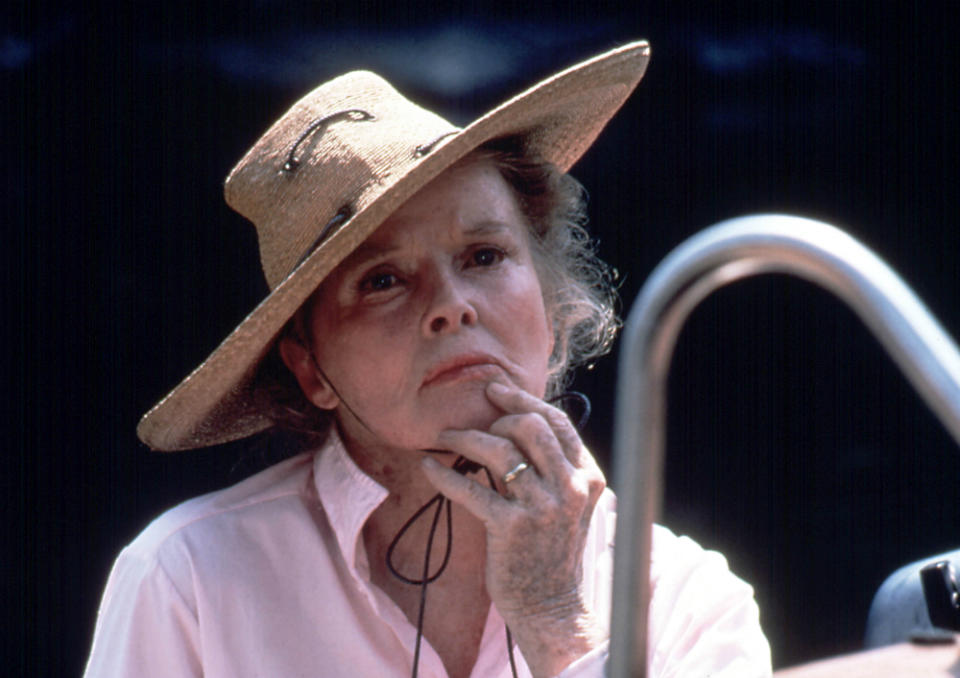
“On Golden Pond”
Henry Fonda and Katharine Hepburn had never met before this adaptation of Ernest Thompson’s play. Jane Fonda co-starred as their daughter and was instrumental in pulling the entire production together. Hepburn defied Oscar odds by winning a fourth award, while Henry Fonda won his first.
Sissy Spacek (1980)

“Coal Miner’s Daughter”
Sissy Spacek, who had a breakthrough role in 1976’s “Carrie,” wowed audiences with her singing and acting as Loretta Lynn in “Coal Miner’s Daughter.” The biopic chronicles Lynn’s life, moving from poverty and marriage (at age 13!) to become a country superstar.
Sally Field (1979)

“Norma Rae”
Early in her career, Sally Field had a hard time being taken seriously, starring in sitcoms “Gidget” and “The Flying Nun.” But in TV’s 1977 miniseries “Sybil,” she startled audiences with her dramatic range, which earned her an Emmy. Bigscreen clout came with “Norma Rae,” about an oppressed factory worker who learns to stand up for herself and her colleagues.
Jane Fonda (1978)

“Coming Home”
“Coming Home” marked the second win (and the third of six Oscar nominations) for Jane Fonda. She played a woman who falls in love with a wounded veteran while her husband is serving in Vietnam.
Diane Keaton (1977)

“Annie Hall”
“Annie Hall” was Diane Keaton’s fourth film with Woody Allen; she also showed her dramatic chops in “The Godfather” films and the troubling 1977 drama “Looking for Mr. Goodbar.”
Faye Dunaway (1976)

“Network”
In her third Oscar nomination (after “Bonnie & Clyde” and “Chinatown”), Faye Dunaway hit the jackpot in the Sidney Lumet-directed satire of the ruthless TV biz and the public’s thirst for low-brow shocks. She plays an executive whose quest for ratings drives her network to success, but at a high price.
Louise Fletcher (1975)

“One Flew Over the Cuckoo’s Nest”
As the women’s lib movement was growing, many actresses turned down the role of Nurse Ratched for being too unsympathetic. But the unknown Fletcher took the role and ran with it. It was adapted from Dale Wasserman’s play and Ken Kesey’s novel. Her Oscar marked the second of three times that the top five Academy Awards went to one film: picture (produced by Saul Zaentz and Michael Douglas), screenplay (Bo Goldman and Lawrence Hauben), director (Milos Forman), and actor (Jack Nicholson), and actress.
Ellen Burstyn (1974)
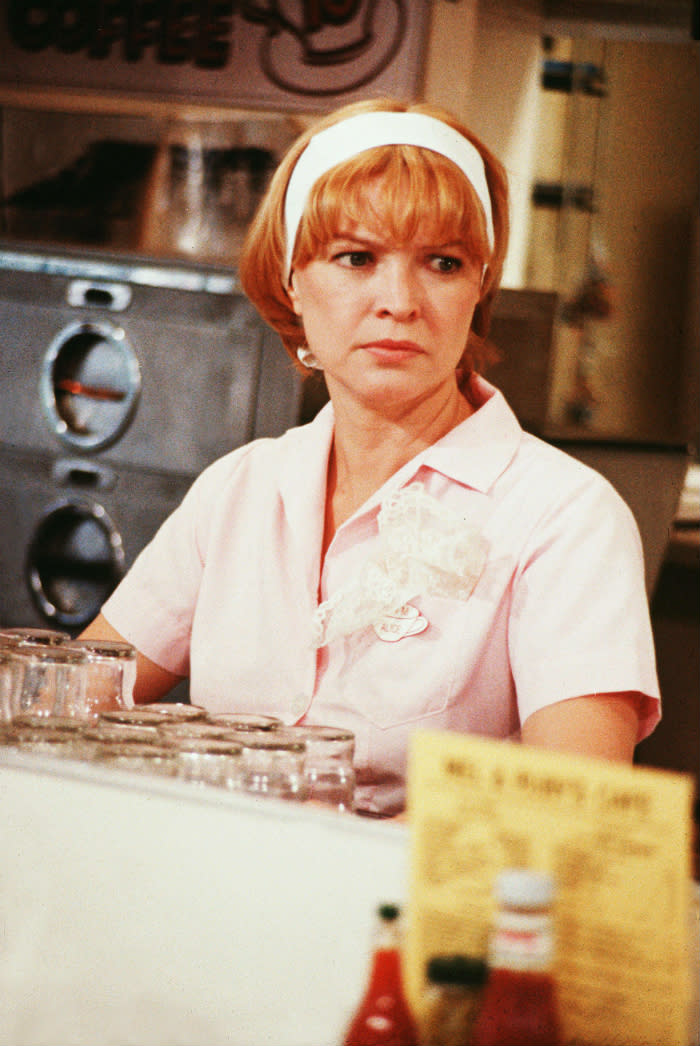
“Alice Doesn’t Live Here Anymore”
Ellen Burstyn had been working in minor roles in film and TV shows under a variety of names. But she clicked in 1971’s “Last Picture Show,” followed by the smash “The Exorcist.” In her third nomination, she won the big prize, as a widowed mom in the Martin Scorsese-directed comedy-drama.
Glenda Jackson (1973)

“A Touch of Class”
After her ultra-dramatic turn a few years earlier in “Women in Love,” she proved to be an expert at romantic comedies and Academy voters fell in love with her all over again, earning her her second Oscar win.
Liza Minnelli (1972)

“Cabaret”
When Christopher Isherwood created the character of Sally Bowles in “The Berlin Stories,” she was a second-rate singer in a dingy club. But under Bob Fosse’s razzle-dazzle direction, Minnelli made the character an electric singer-dancer with a poignant vulnerability.
Jane Fonda (1971)

“Klute”
Jane Fonda’s raw, complex portrayal of a high-class call girl earned her her first of two Oscars. The daughter of Henry Fonda, she began in frothy comedies and melodramas, but proved her talent here. “Klute” was also nominated for Andy and David Lewis’ original screenplay.
Glenda Jackson (1970)

“Women in Love”
Ken Russell, working with Larry Kramer’s adaptation of D.H. Lawrence’s book, elicited strong performances from his four lead actors, with Glenda Jackson especially striking as one of two sisters who have uneasy relationships with men.
Maggie Smith (1969)
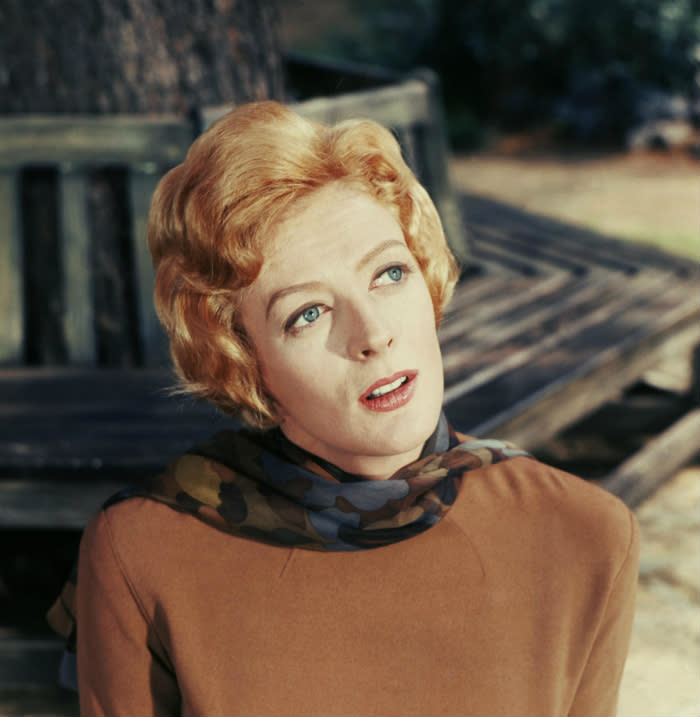
“The Prime of Miss Jean Brodie”
After supporting roles, Maggie Smith moved center stage as Jean Brodie, a flamboyant Scottish schoolteacher in the 1930s. It’s a juicy role, since Miss.=Brodie is opinionated and self-delusional, with a fragility when confronted with the gap between her fancies and realities.
Barbra Streisand (1968)

“Funny Girl”
(Tie vote)
In her movie debut, Barbra Streisand re-created her stage success as vaudeville star Fanny Brice. Streisand was the fourth actress (after Bette Davis, Greer Garson,c and Audrey Hepburn) to win an Oscar under William Wyler’s direction.
Katharine Hepburn (1968)

“The Lion in Winter”
(Tie vote)
James Goldman adapted his stage play about the fireworks between Henry II and Eleanor of Aquitaine, with juicy roles for Peter O’Toole and Katharine Hepburn, under the direction of Anthony Harvey.
Katharine Hepburn (1967)

“Guess Who’s Coming to Dinner”
The movie was the ninth and final pairing of Katharine Hepburn and Spencer Tracy; he died shortly after completing it. The comedy-drama centers on their daughter wanting to marry a black man (Sidney Poitier). It seems quaint today, but was released the same year that the Supreme Court finally OK’d mixed-race marriages, which were illegal in 17 U.S. states.
Elizabeth Taylor (1966)

“Who’s Afraid of Virginia Woolf”
Three years after Elizabeth Taylor’s stunning beauty was showcased in “Cleopatra,” she gained weight and frumped herself up at age 34 to play over-the-hill Martha in this adaptation of Edward Albee’s play. Under first-time film director Mike Nichols, Taylor earned her fifth nomination and second Oscar win. This was the third of her 11 films with Richard Burton.
Julie Christie (1965)

“Darling”
Julie Christie won an Oscar for her complex performance in a zeitgeist film, written by Frederic Raphael and directed by John Schlesinger. A few years earlier, Paul Newman in “Hud” personified the anti-hero of the times. Christie’s Diana Scott was his female counterpart, an English model whose life was centered around superficial and glamorous things. The self-centered anti-heroine was startling and fascinating to movie audiences.
Julie Andrews (1964)

“Mary Poppins”
Julie Andrews made her film debut in the Disney musical. It opened the same year as the big-screen “My Fair Lady,” in which she lost out on the chance to re-create her stage success. She was a big hit as the English nanny in “Mary Poppins,” but found her biggest career success the following year as another nanny, in “The Sound of Music.”
Patricia Neal (1963)

“Hud”
Patricia Neal had been in Hollywood films since the 1940s, starring in such memorable movies as “The Fountainhead,” “The Day the Earth Stood Still,” and “Breakfast at Tiffany’s.” Though her role in “Hud” could be considered supporting, she made a big impact as the housekeeper at a modern-day ranch.
Anne Bancroft (1962)

“The Miracle Worker”
Anne Bancroft was a Hollywood starlet in the 1950s, but wanted more substantial roles, so she returned to New York and the stage. It worked. She won a Tony for William Gibson’s 1959 “The Miracle Worker” about Annie Sullivan’s work with the young and wild Helen Keller. Bancroft and Patty Duke repeated their roles and won Oscars for the Arthur Penn-directed film. Five years later, Bancroft, then only 36, achieved more film immortality as Mrs. Robinson in “The Graduate.”
Sophia Loren (1961)

“Two Women”
The beautiful and voluptuous Sophia Loren had appeared in films in her native Italy and in Hollywood, but totally changed her image as a downtrodden woman trying to protect her daughter in war-torn Europe in the Italian-language “Two Women.” Loren made Oscar history by being the first actor to win a trophy for a non-English-language performance.
Elizabeth Taylor (1960)
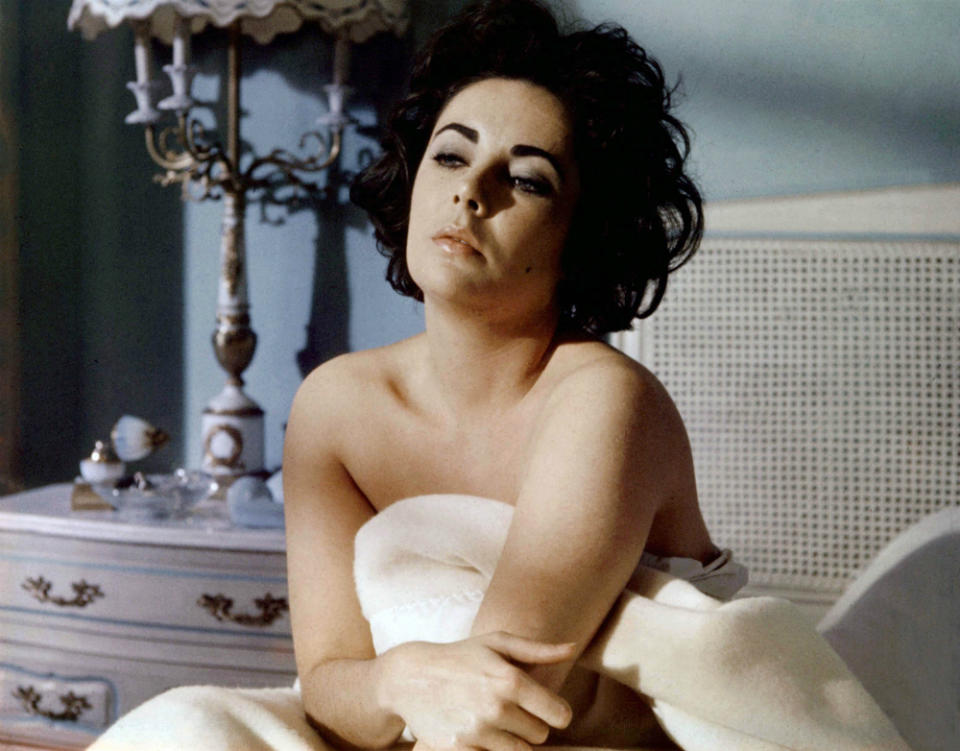
“Butterfield 8”
Elizabeth Taylor earned her fourth consecutive Academy Award nomination for her role as a call girl in “BUtterfield 8.” That helped her Oscar chances. Another factor: Just a month before the ceremony, she contracted pneumonia and was near death, saved only by an emergency tracheotomy. Despite her tabloid scandals in recent years, Hollywood suddenly realized that she should not be taken for granted.
Simone Signoret (1959)

“Room at the Top”
After starring in French films, including the classic thriller “Les Diaboliques,” Simone Signoret played a married woman having an affair with a much younger man in “Room at the Top.” Laurence Harvey starred as the angry, young British man, but Signoret steals the show with her sad-eyed sensuality.
Susan Hayward (1958)

“I Want to Live”
Robert Wise (who later directed “The Sound of Music”) helmed this gritty tale of lifelong criminal Barbara Graham, who was sentenced to death after her alleged participation in a murder. This was the fifth Academy Award nomination (and first win) for Hayward.
Joanne Woodward (1957)

“The Three Faces of Eve”
Joanne Woodward had done a lot of TV work but was virtually unknown when she played the lead in “The Three Faces of Eve,” a based-on-fact story of a woman with multiple personalities. As an antidote to red-carpet “glamour,” she attended the Oscars in a dress she had made herself. She went on to three more Oscar nominations, and great fame as Mrs. Paul Newman.
Ingrid Bergman (1956)

“Anastasia”
After she became a star in the 1940s, she left her husband and children for Italian director Roberto Rossellini and they had a child together. She was exiled from Hollywood. Playing a homeless woman who claims to be Russian royalty in “Anastasia,” she turned in a great performance and won her second Oscar (with a third yet to come in the 1970s) and Hollywood “forgave” her. She was also the eighth woman in nine years to win as best actress in a role adapted from a play. (Audrey Hepburn was the exception).
Anna Magnan (1955)

“The Rose Tattoo”
Born in Rome, Anna Magnani achieved worldwide stardom with the 1945 Italian neo-realist classic “Rome, Open City,” directed by Roberto Rossellini. The actress was a force of nature, conveying passion and fury in ways that most audiences hadn’t seen before. She found a perfect role in “The Rose Tattoo” with Burt Lancaster, based on Tennessee Williams play.
Grace Kelly (1954)

“The Country Girl”
Many predicted Judy Garland would win for “A Star Is Born,” but in retrospect, Grace Kelly’s victory should not have been a surprise. In 1954, she starred in five films, including Alfred Hitchcock’s “Rear Window” and “Dial M for Murder,” and further demonstrated her range as the dowdy wife of an alcoholic actor in “The Country Girl.” A year after winning the Oscar, she gave up showbiz when she married Prince Rainier of Monaco.
Audrey Hepburn (1953)

“Roman Holiday”
Audrey Hepburn had small roles in earlier films, but audiences around the world fell in love with her as a princess who sneaks away from palace protocol to have some fun. Hepburn’s charm and warmth were infectious and, in an era of busty blonde bombshells, she redefined beauty. Her work here with Gregory Peck, under director William Wyler, became one of her signature performances.
Shirley Booth (1952)

“Come Back, Little Sheba”
Shirley Booth won the Academy Award for her film debut in the adaptation of William Inge’s play about a lonely housewife. She became the third consecutive person to win the best-actress Oscar by re-creating her stage success.
Vivien Leigh (1951)

“A Streetcar Named Desire”
Tennessee Williams’ 1947 play was a sensation on Broadway, and all the cast repeated their roles in the film — except for Jessica Tandy (who found screen success much later in “Driving Miss Daisy”). Warner Bros. wanted a star name so they cast Vivien Leigh, who had played Blanche DuBois on the West End. She won her second Oscar as the fragile, fanciful woman on the verge of a nervous breakdown.
Judy Holliday (1950)

“Born Yesterday”
Judy Holliday repeated her stage role as the mistress of a big-money tycoon who proves that she is not as dumb as he thinks. The competition was stiff that year, including Gloria Swanson in “Sunset Blvd.” and the two actresses in “All About Eve.”
Olivia de Havilland (1949)

“The Heiress”
This was adapted from Ruth & Augustus Goetz’s 1947 play, which was based on Henry James’ novel “Washington Square.” It’s about a repressed (and oppressed) heiress who is wooed by a handsome man who either truly cares about her or is just after her money. William Wyler directed.
Jane Wyman (1948)

“Johnny Belinda”
Jane Wyman plays a deaf-mute woman who gives birth after she is raped — considered very daring in its time. The win marked two newish trends: Awards to able-bodied actors for playing people with disabilities and a long streak of best-actress winners in roles for a big-screen adaptation of a play.
Loretta Young (1947)

“The Heiress”
This was adapted from Ruth & Augustus Goetz’s 1947 play, which was based on Henry James’ novel “Washington Square.” It’s about a repressed (and oppressed) heiress who is wooed by a handsome man who either truly cares about her or is just after her money. William Wyler directed.
Olivia de Havilland (1946)

“To Each His Own”
Olivia de Havilland made Hollywood history with her precedent-setting battle against longterm studio contracts. She was unhappy with the scripts that Warner Bros. was offering; after she became independent, she started finding significantly better roles. This was yet another tale of an unwed mother, who creates a successful life and keeps tabs on her son from afar.
Joan Crawford (1945)

“Mildred Pierce”
Joan Crawford had been one of the reigning stars at MGM, but when the studio dropped her, she moved to Warner Bros. She knew a lot was riding on this film, which is adapted from the James M. Cain novel about a single mother of two girls who becomes a successful restaurant owner. Michael Curtiz (“Casablanca”) directed.
Ingrid Bergman (1944)

“Gaslight”
The Swedish actress Ingrid Bergman came to Hollywood in the late 1930s and quickly became one of its biggest stars. This Victorian-era melodrama, directed by George Cukor, provided one of her best roles, as a woman who begins to doubt her own sanity. Bergman gets excellent support from Charles Boyer as her husband and a teenage Angela Lansbury, in her film debut as a saucy maid.
Jennifer Jones (1943)
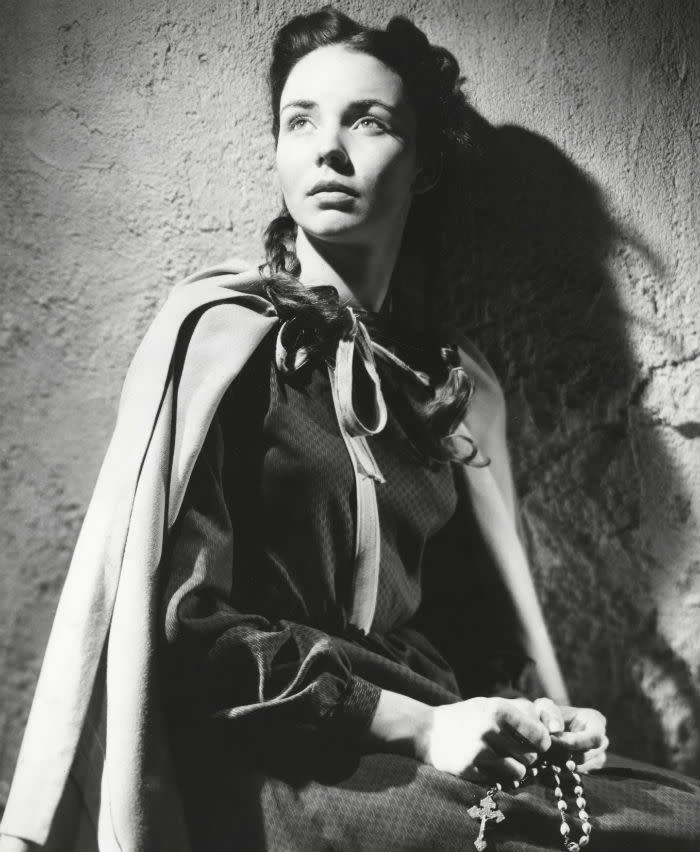
“The Song of Bernadette”
The unknown actress won her Oscar in this fact-based story of a village girl who reports on her visions of the Blessed Virgin Mary in Lourdes, France. Jones pulls off a difficult role, with a radiant and otherworldly look, which indicates she might be communicating with heavenly beings, or she might be not quite right in the head, as they used to say.
Greer Garson (1942)

“Mrs. Miniver”
The actress, born in Ireland, had shot to stardom with the 1939 “Goodbye, Mr. Chips.” The William Wyler-directed “Mrs. Miniver” is the tale of a British family surviving the hardships of World War II, also won best picture. The film helped reassure Americans that the country’s entry into the war was necessary.
Joan Fontaine (1941)

“Suspicion”
Though Alfred Hitchcock directed many films with terrific performances, Joan Fontaine is the only actress to earn an Oscar in one of his films. A year earlier, she starred for him in “Rebecca,” from Daphne Du Maurier’s novel. She won for “Suspicion” as a timid heiress who fears that her husband plans to kill her. Since her sister Olivia De Havilland was also nominated the same year, Fontaine’s win fueled their life-long feud.
Ginger Rogers (1940)

“Kitty Foyle”
Ginger Rogers started as a Broadway hoofer, and became a movie star as the dancing partner of Fred Astaire in numerous musicals. But she also had dramatic aspirations, and she found a great role in this tale of a shopgirl’s career and romantic challenges.
Vivien Leigh (1939)

“Gone With the Wind”
Producer David O. Selznick conducted a long search to find Scarlett O’Hara and many stars and unknowns were considered. When he cast the little-known Vivien Leigh, Variety published a poll showing that movie audiences — eager for the film adaptation — were OK with the idea of a British actress playing a character who was quintessential American. When the film debuted, audiences knew that Leigh was the right decision, while Oscar pundits knew that Leigh was the inevitable winner.
Bette Davis (1938)

“Jezebel”
Bette Davis wanted to play Scarlett O’Hara, but was under contract to Warner Bros. So as a consolation, the studio gave her this project as a smug Southern belle who learns humility. This was the first of four best-actress performances directed by William Wyler.
Luise Rainer (1937)

“The Good Earth”
Rainer became the first double-winner in acting. She and Paul Muni, both born in Europe, played Chinese peasants in an example of Hollywood whitewashing. The film was a big-budget Hollywood adaptation of Pearl S. Buck’s hit novel. After Rainer’s back-to-back wins, MGM offered her a bunch of scripts and outlined plans for her “star treatment.” She was unhappy on both fronts and returned to Europe. The sudden end to her career led to the creation of the “Oscar curse” theory.
Luise Rainer (1936)

“The Great Ziegfeld”
The German-born actress was unknown, and her role as Anna Held, the ex of Broadway producer Flo Ziegfeld, was basically a supporting role. But she has a flashy scene where she talks with him on the phone and tries to fight back tears as she congratulates him on his upcoming marriage; that scene clinched the Oscar.
Bette Davis (1935)

“Dangerous”
After 22 films, Bette Davis made a big splash in “Of Human Bondage” (1934). She didn’t get an Oscar nomination, but the Academy that year allowed write-in candidates (the only time that happened). Even so, Davis placed third in the voting, while Claudette Colbert won. But the following year Davis won the Oscar for one of her more forgettable films, “Dangerous,” as an alcoholic actress trying to rehabilitate herself.
Claudette Colbert (1934)

“It Happened One Night”
Claudette Colbert didn’t want to do the movie, even though Frank Capra was directing the Robert Riskin screenplay and her co-star was to be Clark Gable. She was so sure she’d lose the Oscar that she didn’t attend; she was about to leave L.A. by train when notified that she’d won; she raced to the ceremonies, which were delayed until her arrival. “It Happened” became the first of three movies to win the top five awards: Picture, screenplay, director, actor and actress.
Katharine Hepburn (1932)

“Morning Glory”
Katharine Hepburn made her film debut in 1932 and the following year, “Morning Glory” provided a perfect showcase for her unique combination of eccentric and down-to-earth qualities, playing an aspiring actress named Eve Lovelace. Hepburn had career ups and downs, but ended up a Hollywood icon; this was the first of her four acting Oscars, a record that remains unbroken.
Helen Hayes (1931)

“The Sin of Madelon Claudet”
“The Sin of Madelon Claudet” was a weepie, similar to “Stella Dallas” and “Madame X,” about a woman who will do anything for her offspring. In this case, Madelon Claudet becomes a prostitute to send her son to medical school. It won an Oscar for Helen Hayes, who was also nicknamed “the first lady of the American theater.” She won a supporting Oscar nearly 40 years later for “Airport.”
Marie Dressler (1930)

“Min and Bill”
Chubby and with a lived-in face, Marie Dressler became an unlikely movie star at MGM. She began acting as a teenager and won an Oscar for her seriocomic performance in “Min and Bill,” taking the trophy one day after her 63rd birthday. She also became the third consecutive Canadian to win the best-actress prize.
Norma Shearer (1929)

“The Divorcee”
Norma Shearer became a big name in silent movies, and her career flourished at MGM throughout the 1930s. On some Oscar ballots she is cited for both “The Divorcee” and “Their Own Desire,” but the final win is only for the former film; Academy historians are unsure why that happened.
Mary Pickford (1928)

“Coquette”
The Toronto-born Mary Pickford was a major star in Hollywood’s silent era, and she made her talkie debut with “Coquette” as a flirtatious Southern belle. Aside from her Oscar, she is best remembered as a woman who took charge of her film career; she started exerting creative control over her movies and in 1919 became one of the founders of United Artists. And she was one of the 36 individuals who started the Academy of Motion Picture Arts & Sciences.
Janet Gaynor (1927)
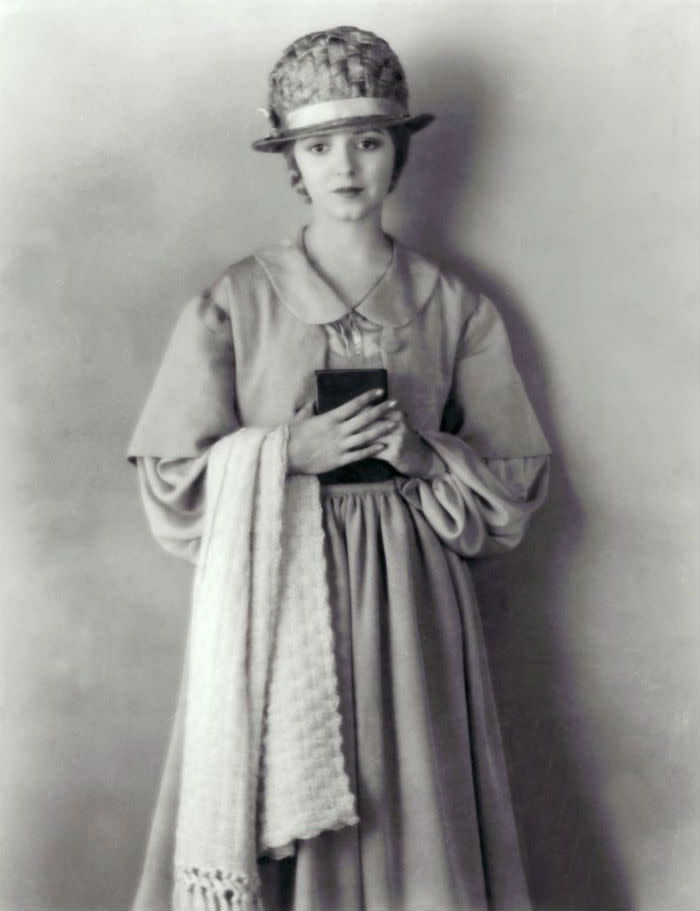
“7th Heaven,” “Street Angel,” “Sunrise”
The winners of the first Academy Awards were announced several months in advance of the ceremony. People were nominated for a single work or multiple works, with the Academy of Motion Picture Arts & Sciences quickly eliminating the latter option. Gaynor had a great year with three hits and, at age 22, remains one of the youngest best-actress winners in Oscar history.
